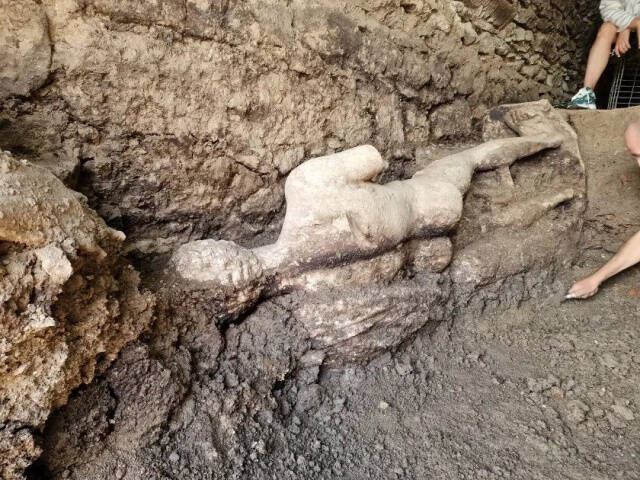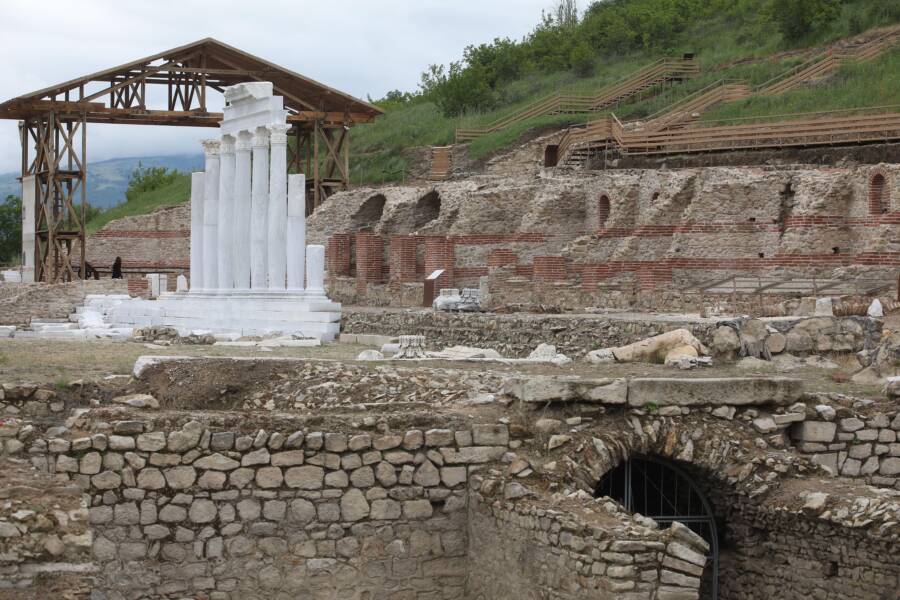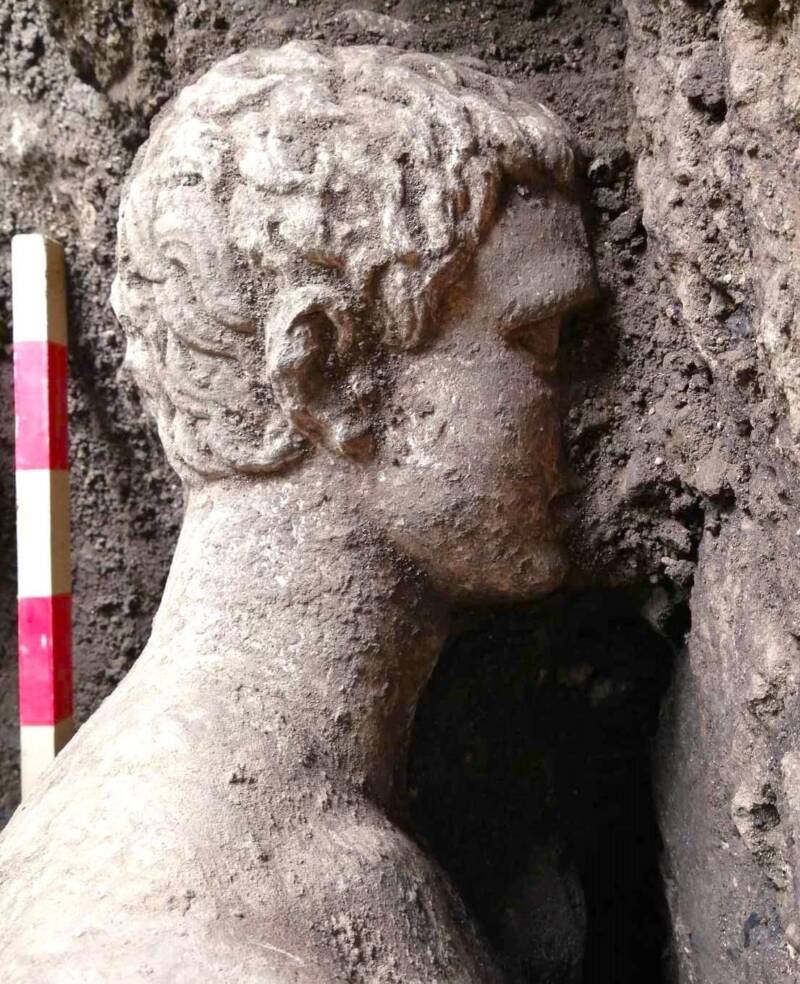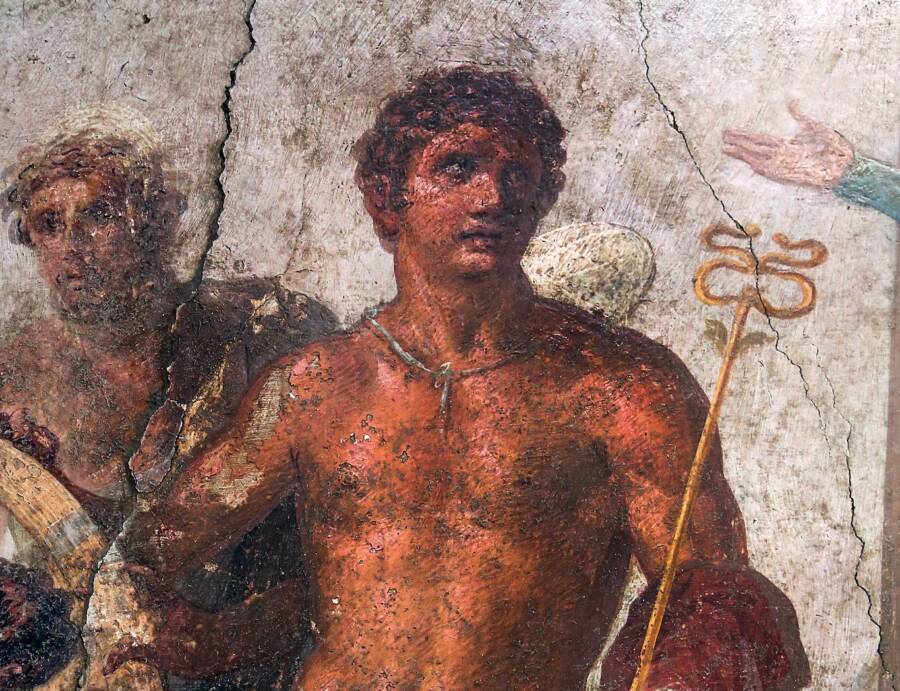Following an earthquake in 388 C.E., residents of the ancient city of Heraclea Sintica buried this statue of Hermes under several layers of dirt, where it has sat untouched for the last 1,650 years.

Archaeologia BulgaricaThe partially excavated statue of Hermes found in the ancient Roman sewer in Bulgaria.
Archaeologists excavating a sewer system from the ancient city of Heraclea Sintica in Bulgaria have just uncovered a remarkably intact statue of the god Hermes.
The sculpture, likely made in the 2nd century C.E. and measuring in at 6’8″ tall, was buried in the dirt around 1,650 years ago to protect it from both earthquakes and changing attitudes towards pagan symbols at the dawn of Christianity in Rome.
Now, researchers hope to completely unearth the statue and eventually put it on display at the nearby history museum in Petrich, Bulgaria.
The Surprise Discovery Of The Hermes Statue In An Ancient Roman Sewer

GeorgiD/Alamy Stock PhotoThe remains of the ancient city of Heraclea Sintica in southwestern Bulgaria.
In 2018, archaeologists began excavating parts of the ancient city of Heraclea Sintica near Petrich, Bulgaria. The city was founded by King Philip II of Macedon, Alexander the Great’s father, between 356 and 339 B.C.E., and was rediscovered in 2002.
While excavating an ancient sewer system called “Cloaca Maxima,” archaeologists discovered a large marble sculpture peaking through layers of dirt. Video footage of the excavation shows archaeologists carefully brushing away the surrounding earth to uncover this ancient treasure.
The sculpture was soon revealed to be a nearly seven-foot-tall Roman statue of the god Hermes. Astoundingly intact, the statue’s only damage looked to be cracks on the left hand and a missing piece of the right arm.
On its left side, the sculpture includes a cloak draped over the god. The sculpture was likely carved out of a single block of marble by a master craftsman sometime during the 2nd century C.E.
Researchers believe that it is a copy of Atalante Hermes, a Greek marble statue from the 2nd century that is a copy of an original from the 4th century B.C.E.
It is the only complete Roman statue ever discovered in the ancient city and may be the best-preserved Roman statue in all of Bulgaria.

Archaeologia BulgaricaThe head of the Hermes statue found at the ruins of Heraclea Sintica.
This discovery comes just a few months after laborers doing construction work in a U.K. parking lot happened upon a Roman-era statue, while the new find also brings to mind the 2023 unearthing of a Hercules-like figure in a different Roman sewer in Italy.
Now, researchers are hoping to fully unearth the newly-found statue in the hopes of discovering a caduceus, or the staff carried by Hermes. Its left side is still buried under layers of soil that have accumulated over 1,650 years.
Hermes And The Ancient Pagan Traditions Of Heraclea Sintica
In its heyday, the ancient city of Heraclea Sintica likely celebrated Hermes as an important deity. Scholars indeed note that Hermes was a prominent deity in this region during ancient times.

Wikimedia CommonsA painting of Hermes from a fresco found at Pompeii.
In the 2nd century C.E., the Roman Empire conquered the region. Afterward, Heraclea Sintica remained an influential city until a massive earthquake struck in 388 C.E. In 425 C.E., another earthquake struck the city and destroyed most of its infrastructure. By 500 C.E., the city was completely abandoned.
So how did the Hermes sculpture find its way into the sewer? According to experts, pagan symbolism became a target for Christian leaders during the reign of Emperor Theodosius I in the 4th century C.E. Many pagan sculptures in Bulgaria are without heads today as a result of widespread destruction campaigns during this period.
Under his reign, pagan sculptures and temples were destroyed across the Roman Empire, resulting in some residents hiding important works of art to keep them safe.
It is likely that residents of Heraclea Sintica buried the Hermes sculpture under layers of dirt in the city’s main sewer to protect it from destruction, either from earthquakes or anti-pagan groups.
“Everything pagan was forbidden, and they have joined the new ideology,” archaeologist Lyudmil Vagalinski told the New York Post. “But apparently they took care of their old deities.”
After reading about the Hermes statue discovered in the Bulgarian sewer, dive into the true story of the Gordian Knot, the unsolvable puzzle of Ancient Greece. Then, read about nine ancient mysteries that are still unsolved to this day.





